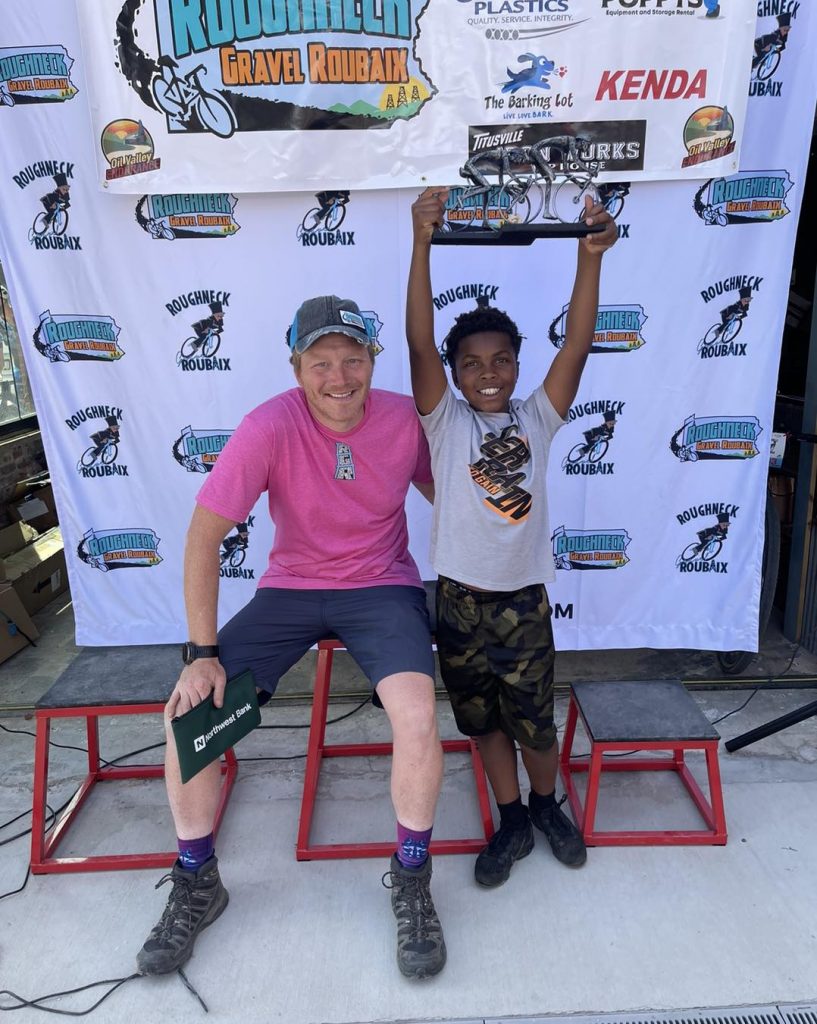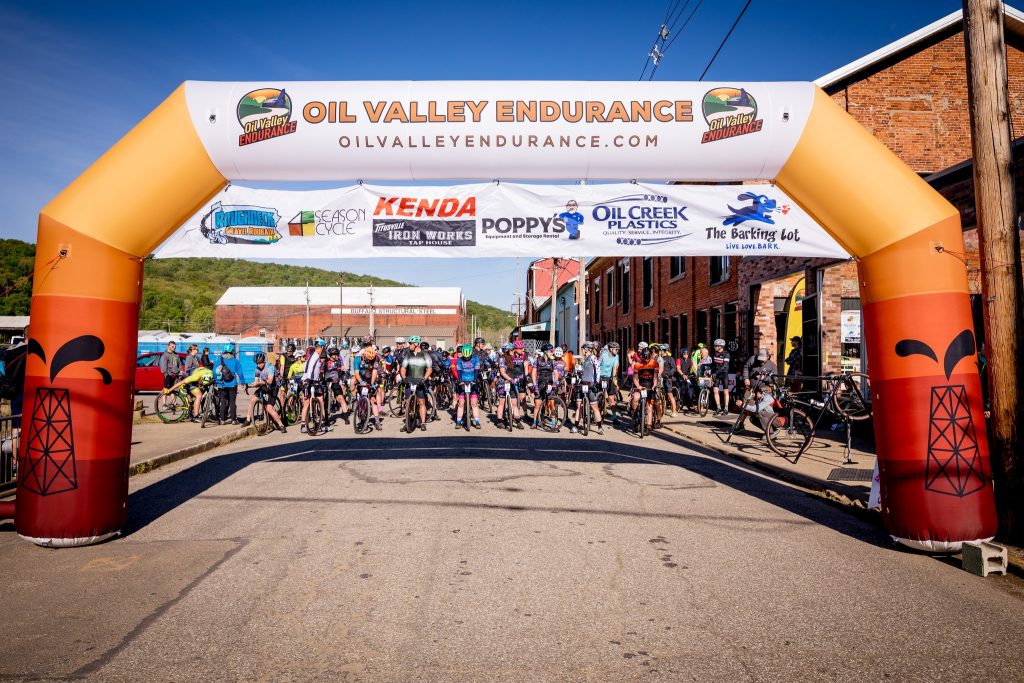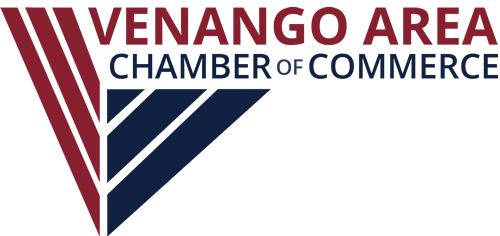Gravel races, such as the Roughneck Gravel Roubaix held annually on Memorial Day weekend and Rock Oil Foliage Frenzy scheduled for October 19, both organized by Adam Diem of Oil Valley Endurance, are boosting economic growth in rural areas. These events attract not only cyclists but also their families and supporters, introducing tourism to regions that might otherwise be overlooked. The economic benefits extend far beyond the racecourse.

Planning and Community Engagement
It’s been said before, “Good things take time.” Preparation for events like these can starts as early as a year in advance. Planning begins as soon as the current race ends, making sure registration for the one race is open in time for the other to capture participants from each to cross register.
Coordination with local authorities is key, as townships often meet once a month. Securing permits early is crucial, and townships are becoming more receptive as they see the benefits of increased tourism. Strategic business partnerships are paramount as well, like the one with Titusville Iron Works which hosts the starting line as well as post-race events for cyclists, family, and friends. PennDOT plays a very important part in ensuring safety and helping to complete proper paperwork with all townships. Race director Adam Diem remarked, “From the beginning, the local support has been unprecedented.”
Nathan Reigner from the Pennsylvania Department of Conservation and Natural Resources notes that outdoor recreation contributes $18 billion to the state’s economy. Local governments and municipalities are recognizing that these events benefit cyclists and local businesses, lodging facilities, and restaurants, which in turn creates a huge economic boost overall.

Growing Popularity and Economic Benefits
The Roughneck race grows steadily each year with nearly 400 registered in 2024. Although not as large as events like Pennsylvania’s UnPAved, attracting 1,000 participants, or Garmin UNBOUND Gravel in the Flint Hills of Kansas, with 5,000 racers and $17 million in impact, the short term goal of Roughneck is to reach 500 participants sustainably. Post-event surveys show 86% of racers spent over $200 locally, with 15% of those spending over $1,000.
This data helps local businesses see potential gains from the influx, benefiting not only Titusville where the race starts, but nearby towns as well. Every year Adam has tried to scale the growth by 100 more registrations per year to make sure the event stays a welcomed, exciting, and hopefully profitable time for local communities.
Challenges and Safety Concerns
Challenges remain despite clear economic benefits. Volunteer recruitment is crucial, with efforts to involve the community. Managing safety for cyclists on open roads in rural areas is also a concern, requiring constant course updates to ensure rider safety.
The Future of Gravel Races and Tourism
These events may soon outgrow the lodging capacity of towns like Titusville, an opportunity for hospitality growth, including new campsites and rentals and participation from nearby communities. As gravel racing expands, race organizers and local leaders must collaborate to welcome participants and spectators.
Beyond races, events like poker runs and all-age rides give everyone the chance to participate. With innovations like ebikes making the sport more accessible, more people can enjoy outdoor recreation, boosting the region’s economy further. Gravel races like Roughneck and Rock Oil are more than sporting events; they drive significant economic benefits for local communities. With careful planning, community support, and a focus on sustainability, these events will continue to bring prosperity and excitement to the region for years to come.
For more information, visit oilvalleyendurance.com or follow facebook.com/roughneckgravelroubaix
This article was published in the Venango Chamber’s October 2024 VenangoWorks! Newsletter.
